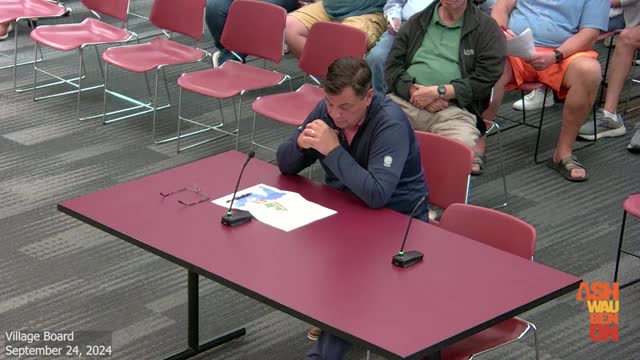Residents Rally Against Controversial Multi-Family Development Plan
September 30, 2024 | Ashwaubenon, Brown County, Wisconsin
This article was created by AI summarizing key points discussed. AI makes mistakes, so for full details and context, please refer to the video of the full meeting. Please report any errors so we can fix them. Report an error »

In a recent government meeting, community members expressed significant concerns regarding a proposed preliminary Planned Unit Development (PUD) that could transform a currently agricultural area into multifamily housing. Residents from the surrounding neighborhoods, particularly Woods Edge, voiced their apprehensions about increased traffic, potential decreases in property values, and the overall impact on their quality of life.
The meeting began with a presentation from the developer's team, which outlined the project and its anticipated benefits. However, many residents were skeptical, citing that the proposed development would lead to a substantial increase in traffic through already congested local roads. Concerns were raised about specific intersections, particularly the difficulties faced during peak hours, which could worsen with the influx of new residents.
Several residents highlighted the need for adequate stormwater management, emphasizing that the area is prone to flooding after heavy rains. They called for comprehensive studies to assess the impact of increased impervious surfaces on local waterways, particularly Ashwaubenon Creek, which is already under scrutiny for water quality issues.
Public comments revealed a strong preference for maintaining the current zoning of single-family homes rather than transitioning to multifamily units. Many residents argued that the proposed changes would disrupt the neighborhood's character and lead to overcrowding. A petition signed by 72 residents opposing the development was presented, underscoring the community's collective stance.
Specific concerns included the potential loss of privacy due to the height of proposed buildings, increased noise from traffic, and the impact of construction on local infrastructure. Residents also requested that the developer consider additional landscaping, such as berms and trees, to mitigate visual and auditory disturbances.
The meeting concluded with assurances from village officials that further public hearings would be held as the project progresses, allowing residents to voice their concerns again. The preliminary PUD is just the first step in a two-phase approval process, with a final PUD requiring additional scrutiny and community input. As discussions continue, the village board faces the challenge of balancing development needs with community preservation.
The meeting began with a presentation from the developer's team, which outlined the project and its anticipated benefits. However, many residents were skeptical, citing that the proposed development would lead to a substantial increase in traffic through already congested local roads. Concerns were raised about specific intersections, particularly the difficulties faced during peak hours, which could worsen with the influx of new residents.
Several residents highlighted the need for adequate stormwater management, emphasizing that the area is prone to flooding after heavy rains. They called for comprehensive studies to assess the impact of increased impervious surfaces on local waterways, particularly Ashwaubenon Creek, which is already under scrutiny for water quality issues.
Public comments revealed a strong preference for maintaining the current zoning of single-family homes rather than transitioning to multifamily units. Many residents argued that the proposed changes would disrupt the neighborhood's character and lead to overcrowding. A petition signed by 72 residents opposing the development was presented, underscoring the community's collective stance.
Specific concerns included the potential loss of privacy due to the height of proposed buildings, increased noise from traffic, and the impact of construction on local infrastructure. Residents also requested that the developer consider additional landscaping, such as berms and trees, to mitigate visual and auditory disturbances.
The meeting concluded with assurances from village officials that further public hearings would be held as the project progresses, allowing residents to voice their concerns again. The preliminary PUD is just the first step in a two-phase approval process, with a final PUD requiring additional scrutiny and community input. As discussions continue, the village board faces the challenge of balancing development needs with community preservation.
View full meeting
This article is based on a recent meeting—watch the full video and explore the complete transcript for deeper insights into the discussion.
View full meeting
